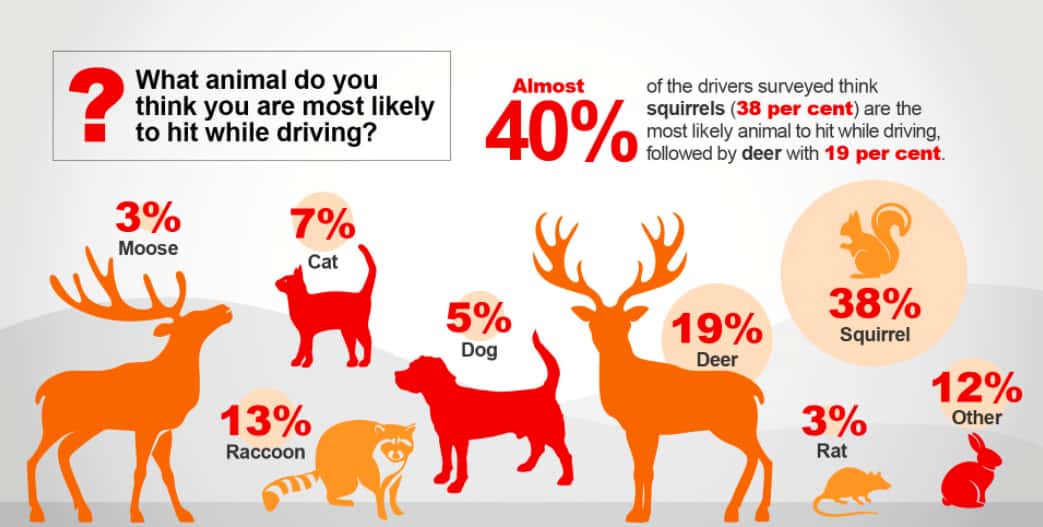Which Animal Are You Most Likely to Hit While Driving?
Published October 27, 2017 at 7:08 pm

Roughly one in three drivers say they don’t feel confident about knowing how to avoid a collision with a large animal, a new national survey from State Farm Canada finds.
“The unpredictability of these situations, combined with human impulses to try to preserve the lives of these animals makes these situations difficult and dangerous,” said State Farm Canada spokesman John Bordignon.
More than 80 per cent of drivers polled say they believe that better public education about how to react to wildlife on the road is needed to prevent collisions that could lead to injuries and fatalities,
According to the survey, when seeing a deer in the middle of a two-lane highway, Canadians are most likely to brake (66 per cent) or take their foot off the gas (55 per cent). More than one-third indicated they would honk their horn and one-quarter said they would swerve.
“In fact, according to police and road safety experts, swerving is not the best strategy when approaching wildlife on the road,” said Bordignon.
“Instead, they advise drivers to maintain their line, even if it’s toward the animal, and firmly apply the brakes. Swerving could send you into the path of an oncoming vehicle or cause you to lose control of your car.”
The survey indicates that Canadians want and need more education on how to deal with wildlife on our roads. The most likely time to encounter wildlife is at dusk or dawn, in October and November, on two-lane rural highways with speeds of 80 km/h or more.


From an insurance perspective, the average auto damage claim after hitting an animal is $4,500.
State Farm Canada’s long-time partner and road safety experts, The Traffic Injury Research Foundation (TIRF), have developed an online information centre focused on road safety and wildlife.
The Wildlife Roadsharing Resource Centre (WRRC) profiles tips on wildlife collision prevention, how to respond to animals on the road, tips for when a collision with wildlife is unavoidable and advice on what to do after a collision.
Specifically, TIRF has produced a fact sheet to address some of the common myths and misconceptions around wildlife vehicle collisions.

THE NUMBERS
- More than 25 per cent of survey respondents have hit a small animal on the road while driving.
- More than 25 per cent have either hit or nearly hit a large animal while driving.
- More than half of respondents who said they had hit a large animal had damage to their car.
- More than 80 per cent of respondents claim they slow down when they see road signs for wildlife in the area.
- Most respondents believe either evening (46 per cent) or night (36 per cent) is the most likely time to hit an animal on the road.
The online survey, conducted in March 2017, polled 3,061 respondents of driving age across Canada.
Infographic courtesy of State Farm Canada
insauga's Editorial Standards and Policies advertising





